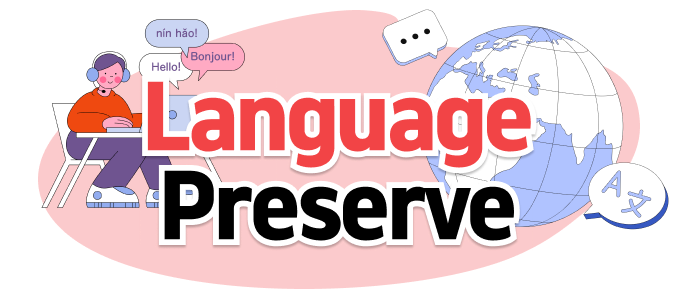Exploring the Vibrant Linguistic Tapestry of New York City
In "Language City: The Fight to Preserve Endangered Mother Tongues," Ross Perlin embarks on an eye-opening journey into the intricate world of endangered languages, with the bustling metropolis of New York City serving as his canvas. Winner of the British Academy Book Prize 2024, Perlin's work is not merely a book but a tapestry woven from the strands of history, linguistics, and personal narratives that highlight the urgent need to save our world's linguistic diversity. The backdrop of this narrative is New York City, a dizzying mosaic of languages, histories, and cultures that is both unique and universal in its story of migration and survival.
New York City's Superdiversity
Along the vibrant stretch of Roosevelt Avenue in Queens, New York City, a symphony of over 300 languages echoes daily—languages as diverse as Mixtec, Mongolian, Aymara, and Maranao. This multitude of tongues is emblematic of what sociolinguist Jan Blommaert describes as "superdiversity," a term reflecting the deep and rich linguistic diversity spurred by global mobility and migration. However, the vitality of this linguistic landscape is threatened; approximately eight out of nine languages spoken in New York face the risk of extinction. This alarming rate mirrors the global situation, where nearly half of the world's 7,000 documented languages are endangered and an astounding 1,500 are forecasted to vanish by century's end.
A Mission to Document and Preserve
Undaunted by the daunting statistics, Perlin, a writer, translator, and language activist with a teaching post at Columbia University, actively engages in preserving these disappearing languages. As Co-Director of the Endangered Language Alliance (ELA), his "quixotic mission" to document and celebrate New York's linguistic diversity is yielding fruit. Through large-scale documentation projects and an innovative interactive language map, Perlin and his colleagues strive to keep alive the city's indigenous, minority, and endangered languages, ensuring they have a future amid shifting demographic and cultural tides.
The Significance of Linguistic Diversity
Perlin's narrative is underpinned by a radical viewpoint that stresses the importance of linguistic diversity. Just as biodiversity is essential for ecological balance, the preservation of language diversity is crucial for cultural and community resilience in imbalanced societies. For Perlin, language represents "thousands of natural experiments" in ways of thinking and living that enrich our understanding of humanity. Though linguists are powerless to resurrect extinct languages, Perlin's work is a call to action to fight for those still clinging to survival.
New York's Linguistic History
In his exploration of New York's linguistic past, Perlin artfully combines well-known anecdotes with stories of often-overlooked protagonists. He illuminates the historical cycles of displacement and migration, such as how indigenous peoples' languages were driven out by European settlers, only for their descendants to return to the city in search of economic betterment. Cultural exchanges continue in unexpected ways, as seen in Ladino language celebrations at a Queens synagogue, a living remembrance of languages almost snuffed out by historical tragedies.
Stories of Endangered Language Speakers
Central to Perlin’s study are the compelling stories of individuals striving to preserve their mother tongues amidst the city's urban cacophony. We meet speakers like Ramina, who has transplanted roots from Nepal to Brooklyn, and Ibrahima, who invigorates the N’Ko language through education and digital innovation in mosques. These personal narratives showcase courage and resilience, offering a glimpse into the lives of those who enrich New York's linguistic fabric.
Challenges and Uncertain Futures
Despite the inspiring tales, the future of these endangered languages remains precarious. Urban centers such as New York, shaped by colonization and globalization, may no longer guarantee a safe haven for linguistic diversity due to economic and demographic shifts. With rising urban migration, gentrification, and housing costs, the edges of urban areas may become the last bastions for these languages. Simultaneously, global economic pressures threaten linguistic diversity, particularly in remote regions where it flourished beyond state reach.
The Interplay of Language and Economics
The relationship between language preservation and economic development poses complex challenges. Language diversity can boost productivity but also cause ethnic fractionalization, potentially hindering political stability and economic growth. In places like Barcelona, integrating diverse migrant languages without impacting the local dialect, Catalan, underscores the intricacies involved.
Language and Cultural Survival
Economic and immigration factors permeate Perlin's work, highlighting the broader struggle for cultural survival. The narrative doesn’t focus solely on the linguistic features of a language but weaves in the social and economic lives of its speakers. Perlin paints a vivid picture of immigrant experiences—the struggle for documentation, economic survival, and communal cooperation—to emphasize the broader cultural significance of language preservation.
Hope and Honour in Language Conservation
Drawing parallels with global seed vaults that protect biodiversity, Perlin suggests that languages, too, can be digitally archived. However, like seeds requiring soil, languages thrive through communication and shared use. Perlin’s work stands as a testament to hope and a tribute to the vibrance of languages, underscoring the vital tenet that languages embody life, memory, and identity.
Through "Language City," Perlin’s message is clear: preserving languages is not merely about preserving words but is a crucial stand to honour diverse identities and cultural legacies. As cities like New York continue to evolve, they remain living testaments to the enduring spirit of linguistic diversity.
출처 : Original Source

